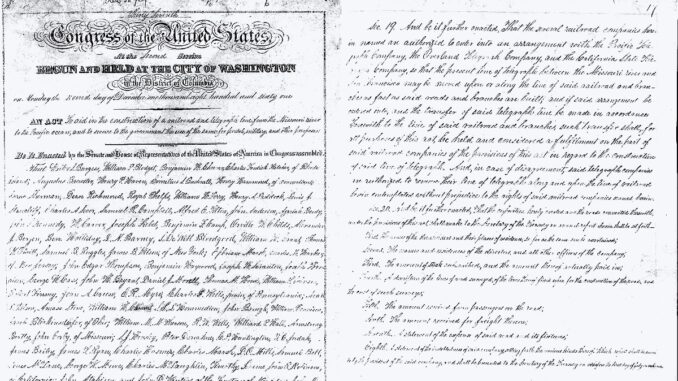
The Pacific Railway Act of 1862 was a Congressional act promoting the construction of a transcontinental railroad. It authorized government bonds and land grants to railroads.
In 1853, Congress authorized the War Department under Secretary of War Jefferson Davis to survey five potential transcontinental routes from the Mississippi from north to south. In early 1855, the federal agency submitted a twelve-volume report to Congress.
Private corporations were to proceed without federal help, but no route or bill could be agreed upon. However, the secession of the southern states in 1861 removed opposition to a central route, and the Pacific Railroad Act of 1862 designated the 32nd parallel as the initial transcontinental route.
The Pacific Railway Act authorized the construction of a railroad and telegraph line from the Missouri River to the Pacific Ocean. The measures began the federal government’s granting lands directly to corporations instead of to states for the benefit of corporations.
Subsequent measures — The Pacific Railroad Act of 1863, the Pacific Railroad Act of 1864, the Pacific Railroad Act of 1865 and the Pacific Railroad Act of 1866 — modified or repealed some of the original law’s provisions.
The Pacific Railway Act of 1862 authorized the Union Pacific and the Central Pacific to build the lines.
Beginning in 1863, the Union Pacific started building west from Omaha, while the Central Pacific worked eastward from Sacramento, California. The last rails were laid, and the last spike was driven during a ceremony at Promontory, Utah, on May 10, 1869.

